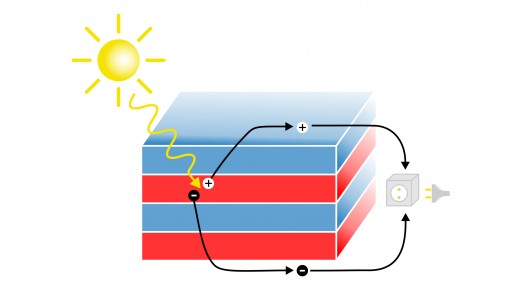
Researchers from the Vienna University of Technology, together with colleagues from the U.S. and Germany, have used computer simulations to show how the unique electrical properties of a new class of materials known as layered oxide heterostructures can potentially be used to create a new type of efficient, ultra-thin solar cell.
The new materials are created by combining single atomic-scale layers of different oxides. When combined, or stacked, these heterostructures display significantly different electrical properties than the single oxides do on their own. After studying the structures in large-scale computer simulations, the research team believe that by designing materials with exactly the right arrangement of physical properties, the layered oxide heterostructures hold great potential for solar cell design.
via gizmag
Image: Vienna University of Technology






Are you considering modeling in Tennessee (ORNL) and Vienna? http://physics.aps.org/synopsis-for/10.1103/PhysRevLett.110.078701 cites the 5-pager in PRL that will let you know whether symphonic fast-growth stabilized-substrate line options are for you! (Sun performance not guaranteed, plenty of models are required by the first, perhaps you have too much Vanadium?)